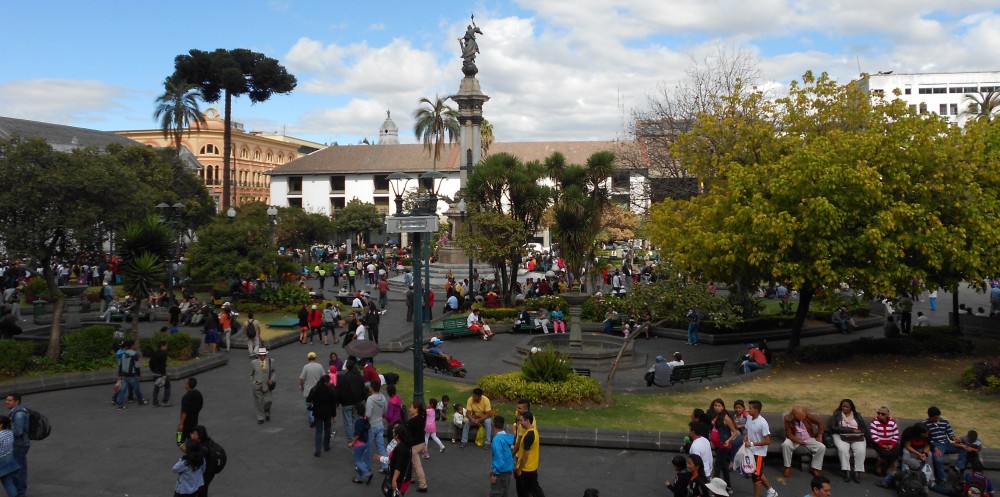The Shining Path and Peruvian Terrorism – Gordon H. McCormick
The article “The Shining Path and Peruvian Terrorism” by Gordon H. McCormick explains Sendero Luminoso’s (Shining Path) origin, leadership, organizing concepts, and style of operation. According to McCormick, Sendero Luminoso was born in the Andean Peruvian department of Ayacucho. This department has been greatly ignored by the government of Lima, and is one of the most impoverished regions of Latin America. Historically, this region is known for being the site of the last great battle for Latin America’s liberation. Contemporarily, it has been used, and is used, for many Indian uprising. The site’s alienation from the rest of the country provides a great secretive platform for organizing revolutionary groups. Hence, Sendero Luminoso successfully organized itself using this space.
Former Philosophy Professor Abimael Guzman founded Sendero Luminoso in 1970. Guzman attended the University of Huamanga in Ayacucho and studied Immanuel Kant; he wrote his thesis on The Bourgeois Democratic State. His socialist orientation led him to becoming a member of the Communist Party of Peru, and after being kicked out, he eventually founded today’s Communist Party of Peru, Sendero Luminoso. Guzman used his influences in the University of Huamanga in Ayacucho as a basis for creating his revolutionary organization. McCormick explains that Guzman used his position in the university to influence the faculty and the students that entered the university. His mission was to indoctrinate the students for a future generation of followers. The university therefore played an essential role in building Guzman’s image, ideas, and organization.
Although Guzman officially founded Sendero Luminoso in 1970, the group only came to light in 1970. After years of gathering support and organizing its operations, the group was ready to come to light. During Peru’s 1980 elections, Sendero Luminoso attacked many of the polling stations in Ayacucho to prevent individuals from voting. After this main incident, the group grew rapidly and launched multiple attacks following Election Day.
McCormick explains in his article that the group is known for being very secretive and mysterious, so their goals and strategies are hard to pinpoint. However, we know that Sendero Luminoso calls for the establishment of communal village-oriented economy based on barter exchange, and an abolishment of current economic structures. The group began implementing this economic structure on a small scale in Peru. Sendero Luminoso would enter rural villages, kill the present landowners, and hand their land to the peasantry in two-hectare parcels. If anyone owned more than two-parcels they were subject to being shot. Individuals were told to produce only for their needs and for their immediate community. This process, among many other acts of violence, was one of the ways Sendero Luminoso attempted to gain a new state of workers and peasants; and to resuscitate Andean socialism.
Peru Force to Confront Deep Scars of Civil War – William Neuman
The article “Peru Force to Confront Deep Scars of Civil War” by William Neuman gives a contemporary context of the role of Sendero Luminoso in Peru. Abimael Guzman was captured and imprisoned by the Peruvian government in 1992. He was sentenced to life in prison, and since then Sendero Luminoso’s activity has declined. There is currently an existing portion of the group still operating in a remote area in the Amazonian jungle. However, the group has focused less on provoking attacks and violence, and instead has continued largely through drug trafficking. The reliance on drug trafficking is a common theme across many guerilla groups throughout Latin America. For example, many guerrillas in Colombia have fallen into drug trafficking because it is a convenient and fast way of getting money.
In Neuman’s article, he explains that Sendero Luminoso attempted to reinvent itself in 2012. Hundreds to thousands of former guerrilla members came together to gather signatures to try to gain political participation. In spite of the group’s attempt to become a political party, election officials rejected their request. According to officials, the group had failed to meet some requirements and represented anti-democratic ideals. This movement reminds me of the FARC (one of Colombia’s guerilla groups), which for many years have fought to gain political power to spread their socialist philosophies. Although political participation of a so-called “terrorist” organization may sound nonsensical, involving guerillas in politics is a strategy for preventing further guerilla violence. If Sendero Luminoso were to reinvent itself, Peru may consider their participation in the future.
Peru’s economy has been growing since Alan Garcia’s presidential term. However, social inequities, such as poverty, slums, and marginalization of indigenous peoples, are still present within Peru. It is these inequities that inspire minority groups to revolt against the government; hence, the birth and attempted re-birth of Sendero Luminoso. In this article, Neuman explains that what was particularly troubling about the groups attempted rebirth in 2012, was that many of the participants were college students. This raises the question of whether this is a result of Guzman’s indoctrination of the students of University of Huamanga in Ayacucho. Are these contemporary Sendero Luminoso members the followers Guzman was trying to gain during his time at the university? Maybe. What was particularly disturbing for many Peruvians was that the interviews with the students revealed that many of them were so young that they did not remember the turmoil of Peru’s civil war during the 1980s to 2000s. In fact, many of the students could not even recognize Guzman’s face when they were shown a picture of him. It appeared as though many of them did not really know what or for whom they were fighting for or against. Overall, what I like about this article is that it illustrates how Sendero Luminoso is still present in Peru after the war, and after Guzman’s imprisonment.
